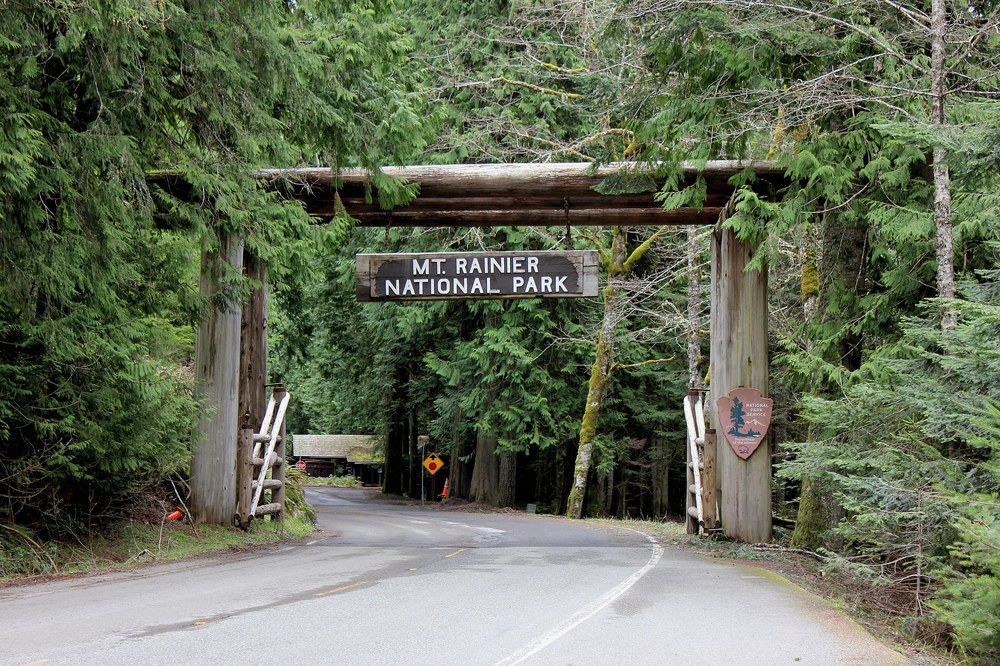
On April 12, the Department of the Interior announced that vehicle entrance fees will increase by $5 at 117 locations managed by the National Park Service.
The uptick in cost is a drastic reduction from the Department of the Interior’s original proposal to increase vehicle entrance fees to $70 at the nation’s 17 most visited parks – a price surge that would have nearly tripled the cost at parks like Olympic and Mount Rainier, which currently charge $25.
The new $5 figure comes in the wake of 109,000 public comments – 98% of which rejected the idea of a severe fee increase. Our Mountaineers community contributed more than 1,000 comments. Thank you for speaking out to keep our national parks accessible!
We appreciate that the Department of Interior adjusted their plans after hearing from the American people, but we still have concerns about how our parks are funded, how access is prioritized, and how the public is allowed to weigh in. We’ll get into that in a bit. First, let’s look at the details of the fee increase.
Fee Increase Details
- Fees will increase at all 117 parks that currently charge entrance fees. (This differs from the original proposal, which only targeted the 17 most visited national parks.)
- Entrance fees will increase $5 per vehicle and will be phased in beginning this summer.
- The National Parks Service (NPS) estimates the full plan will increase fee revenue by $60 million.
- Of the anticipated $60 million in new revenue, at least 55% will go towards our parks’ maintenance backlog. The rest will be allocated for enhancing visitor experience, protecting park resources, and helping with maintenance in parks that do not charge fees.
- You can find more details from the NPS online.
Concerns
We believe fee increases must be carefully weighed so as not to hurt local economies that depend on tourism from park visitation. Furthermore, entrance fees must avoid pricing out lower-income Americans who have a right to experience our public lands. Our concerns center on the new fee’s public process (or lack thereof).
Although the public had an opportunity to comment on the original $70 proposal, no such opportunity was afforded for the new plan.
We saw a much different approach when the three national parks in Washington state raised fees three years ago. At that time, the NPS led significant outreach efforts to local communities and the general public. These moderate increases were enacted only after hearing from local communities and stakeholders.
We’re concerned these new fee hikes could set a concerning precedent. These are our public lands, and the public should have as many opportunities as possible to have a voice in how they’re managed. We want to make sure our land management agencies take into consideration the wide-ranging impacts of recreation fee increases.
What Now
While this outcome was better than the original proposal, the nominal revenue generated by park entrance fees (estimated $60 million) are not the answer to how we fund our national parks or how we address the almost $12 billion maintenance backlog. Moving forward, we will continue to work with legislators and partners on long-term funding for our parks, like the bipartisan National Park Service Legacy Act, sponsored by Washington’s own Derek Kilmer (WA-06).
Congress needs to take action on protecting and funding our national parks, and we were heartened to see Congress take a small step by increasing funding to the NPS in the March omnibus spending bill. The budget allocated $3.2 billion for the NPS – $270 million more than the 2017 enacted level. This included a $138 million increase for construction to repair the maintenance backlog.
Overall, we’re relieved entrance fees will not be doubled or tripled, and we hope the new $5 increase will not be a barrier for people visiting our public lands.
Here in Washington State, our congressional delegation continues to step up as advocates for our public lands and champions for our national parks. We appreciate Senator Cantwell for her strong voice on this issue.
 The Mountaineers
The Mountaineers